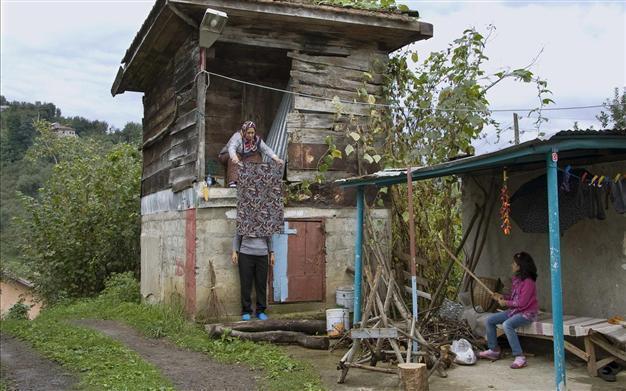Istanbul exhibition tackles religious-related issues
ISTANBUL

Nilbar Güreş’s photos show women breaking the rules of socially accepted practice in public space nd hints at restrictions enforced upon the female body.
An ongoing exhibition at Istanbul’s Salt Galata titled “Rainbow in the Dark” brings together a group of works that tackles issues related to religious rituals, gender politics and spirituality.
Curated by Sebastian Cichocki and Galit Eilat, the exhibition takes a post-secular perspective, investigating how contemporary art challenges the outdated opposition between religious and secular societies. It explores the way current art addresses the appeal of rituals, mysticism and the irrational beyond the horizon of modernity.
One of the major phenomena in contemporary society is the growing influence of monotheistic religious practices. To start an investigation into the influence of religious norms on society, a core group of works were selected from the collection of the Museum of Modern Art in Warsaw.
Many of the works gathered in the exhibition share a more ecstatic and spiritual aspect, as well as accommodating similarities between the institutionalized “systems of faith” of both religion and art.
Among the works, “Black Pope, Black Sheep” (1987) by Miroslaw Balka is a work true to the spirit of the latter half of the 1980s, which at the same time expresses trust in the approaching breakthrough that was to shake the foundations of the world.
A group of rarely exhibited artworks by Pawel Kwiek include “Ecumenism of Art” (1988) in which the artist tests the power of color to represent sacrum. Kwiek’s practice in the 1980s employed rational avant-garde strategies.
Another group of works in the exhibition deals with standards of behavior, gender regulations and aesthetic preferences that traditional religious communities conform to in daily life. For example, Nilbar Güreş’s photographs from Trabzon show women breaking the rules of socially accepted practice in public space and hints at restrictions enforced upon the female body.
Finally, the exhibition is tied together by several works that interweave elements from the monotheistic religions. “Trellis of My Mind” (1998) by Gülsün Karamustafa is a frieze that includes illustrations copied from Islamic, Christian, and Jewish manuscripts to create a kind of visual space containing our collective past.
“Mother Tongues and Father Throats” (2012) deals with linguistic issues and is dedicated to the vocal sound “khhhhhhh,” which is not found in English, French or Portuguese and therefore only appears as a boundary between East and West. “Rainbow in the Dark” can be seen at SALT Galata until Jan. 18, 2015.
